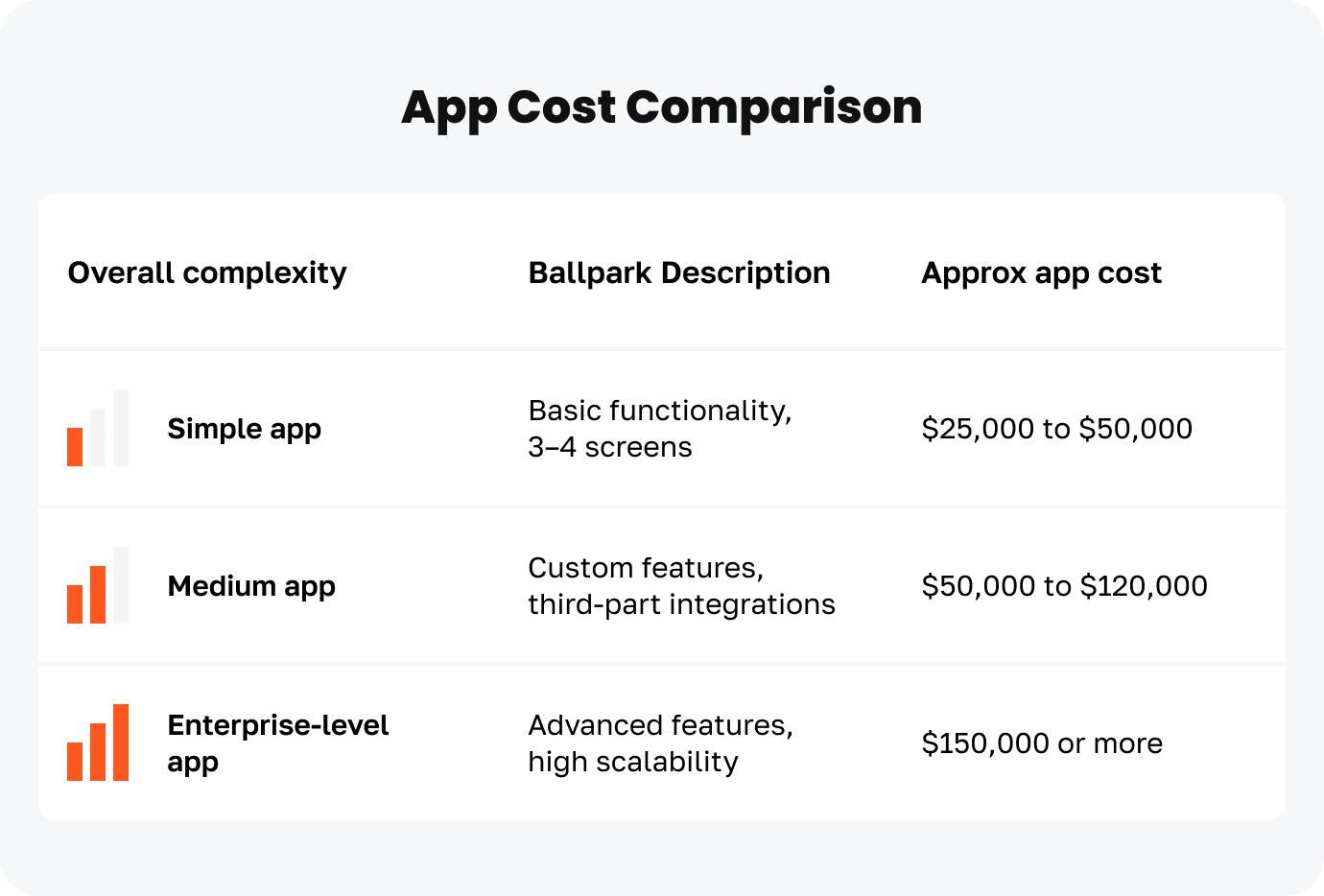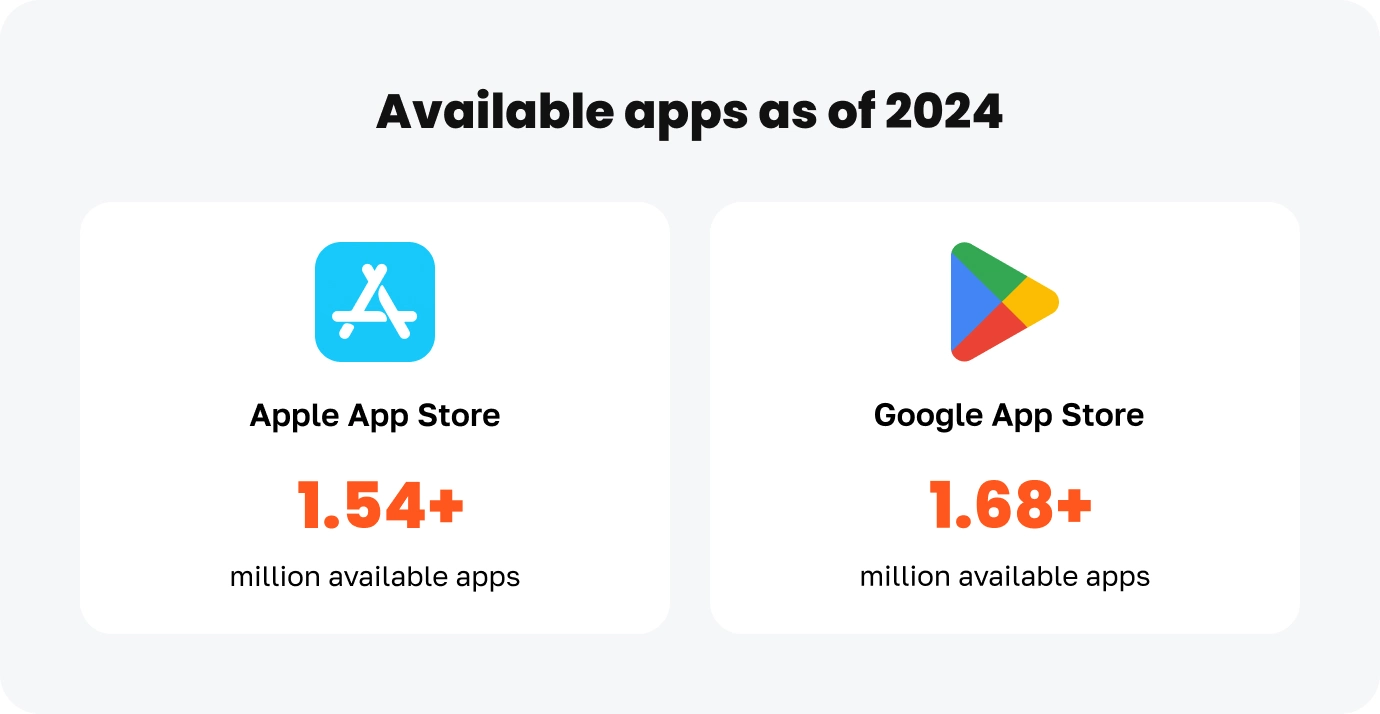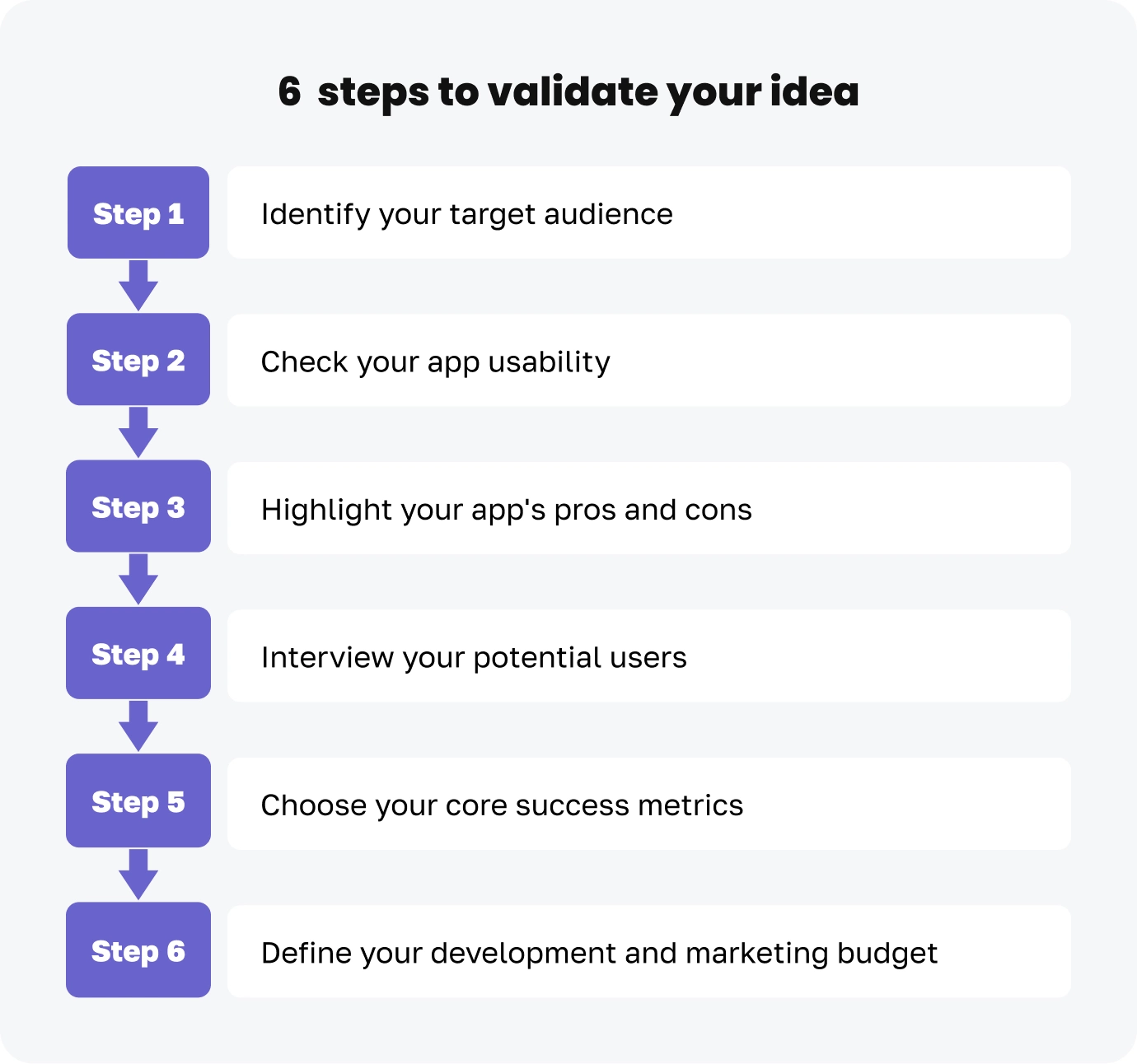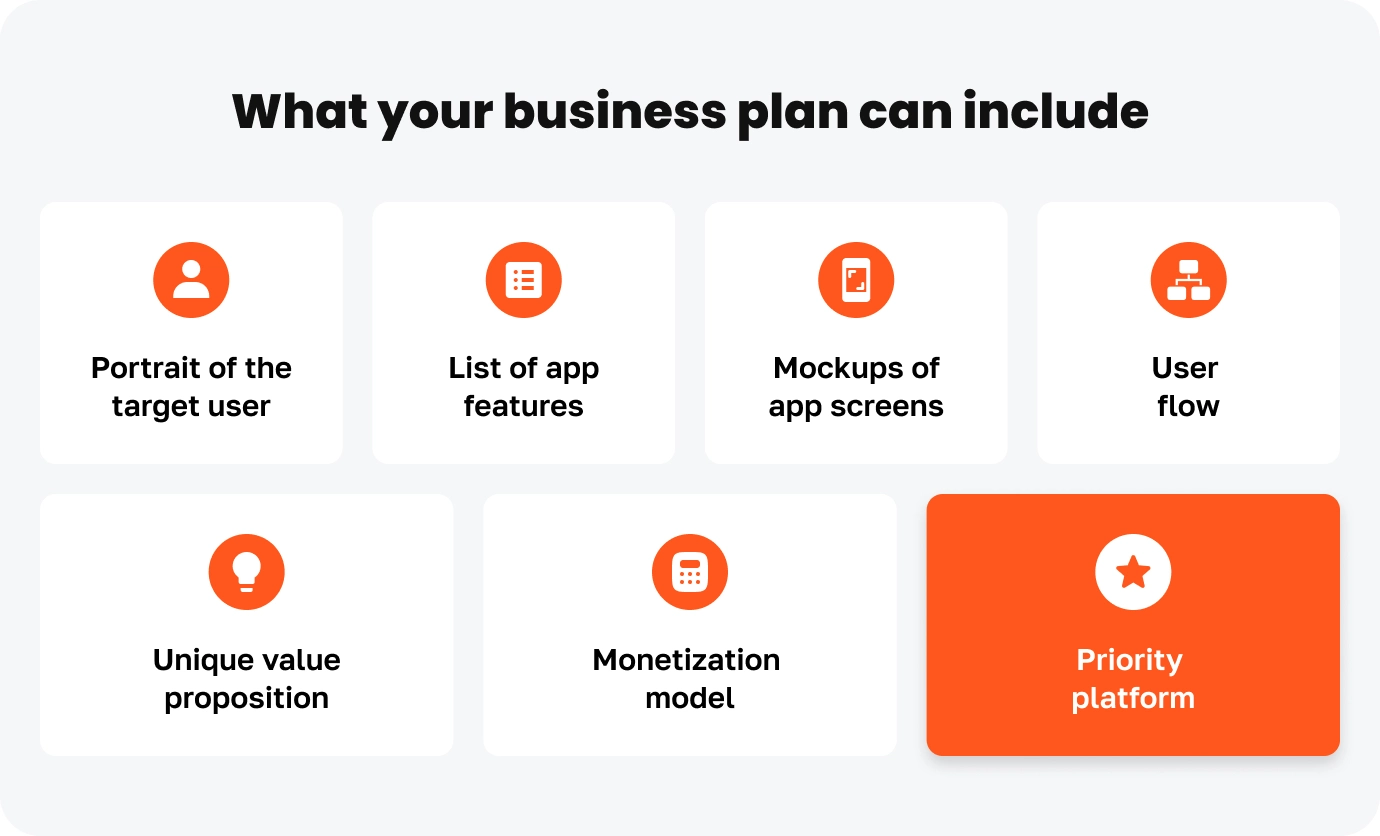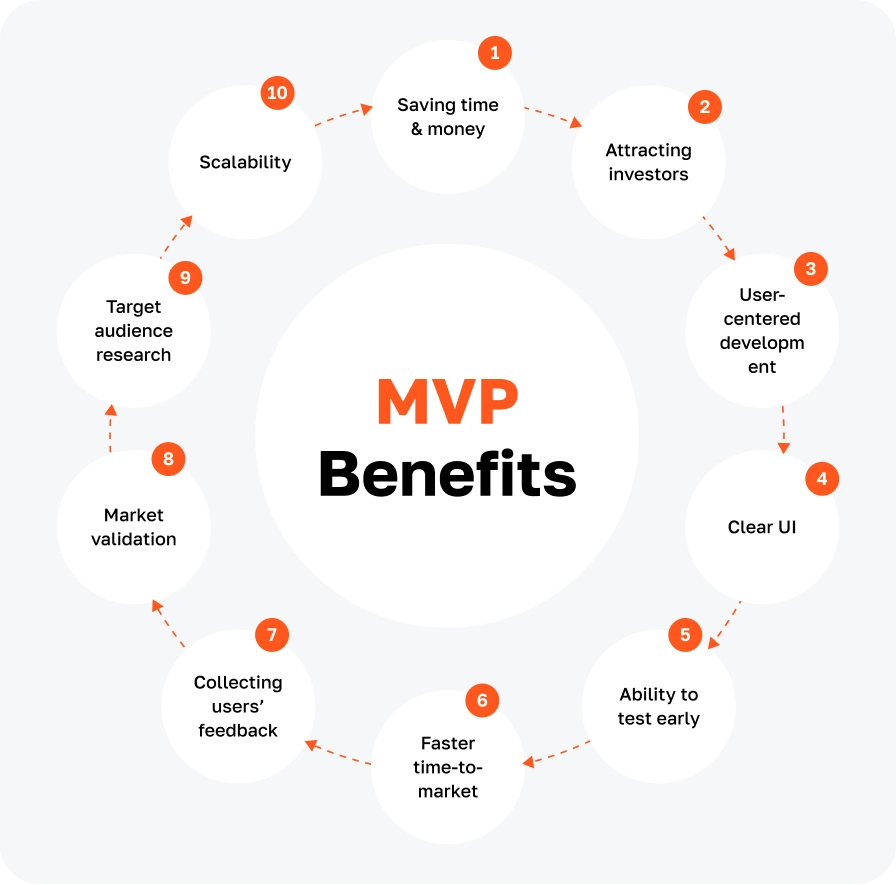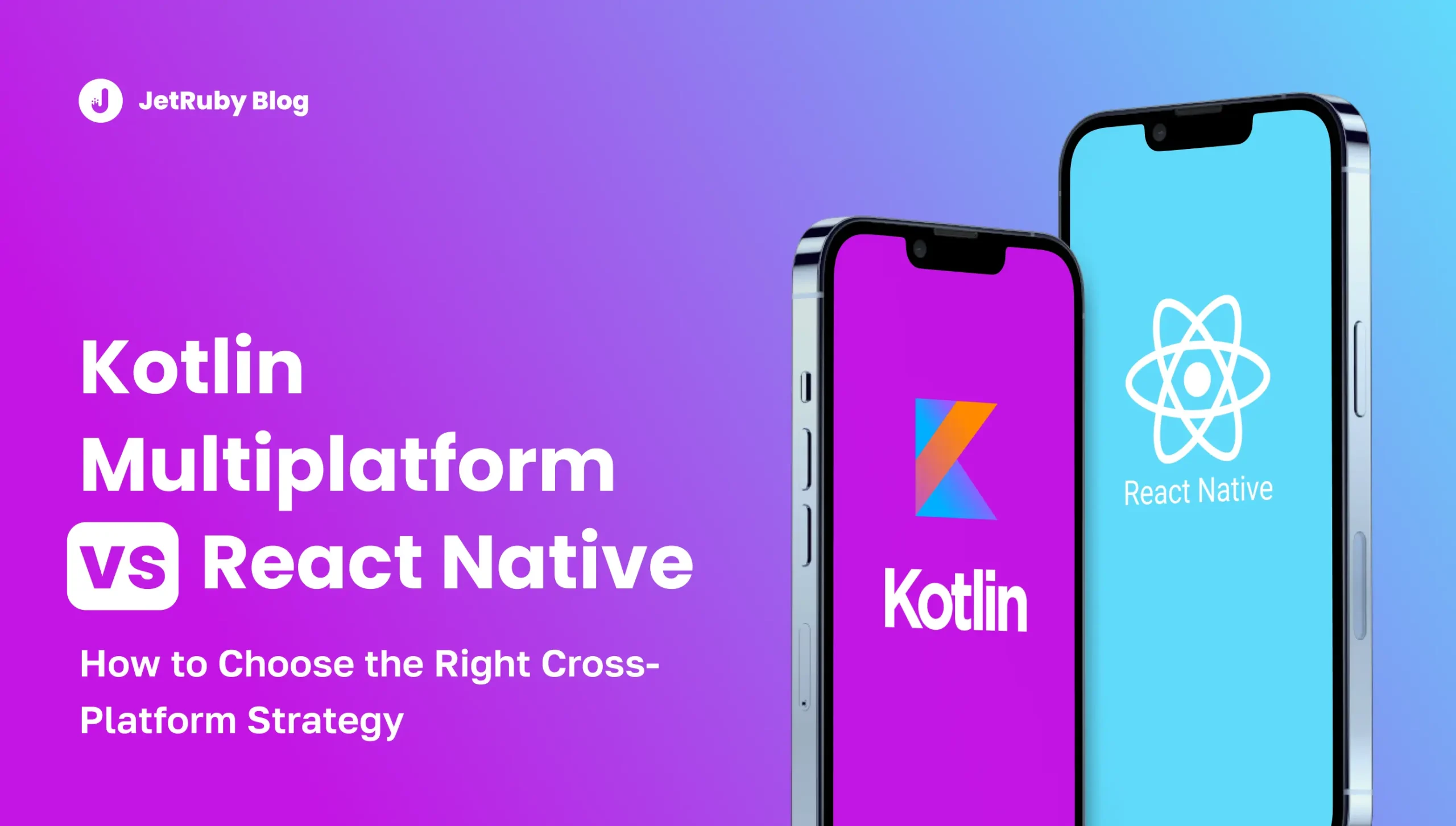Table of Contents
Many business owners notice a market gap, develop a great app idea, and think, “I could theoretically fix this.”
One could see a chance to cover an untapped market. Another entrepreneur could notice that existing apps lack something important.
However, startups with a new concept can feel excited and unsure at the same time.
These doubts arise because building software demands a good business strategy, a clear picture of user needs, and a plan to deal with unexpected twists.
It can also raise many questions:
- Where do I begin?
- How do I check if people want this app?
- How much will it cost?
- Who can build it?
- Where do I find beta users or early backers?
- What to do with an app idea if I don’t have a dev team?
- How to develop an app idea on a tight budget?
In this article, we’ll answer these questions and walk through a practical path, from the early spark of an app idea to releasing a functioning solution.
Let’s dive in!
Key takeaways
- Mobile apps require significant time and financial investment for development. A solid idea for an app is a good starting point, but initial concepts need organization.
- Most software developers understand that they cannot manage every task on their own. A team or partner is essential for handling design, coding, testing, and additional steps.
- The competition is intense. Millions of apps are already available, and every new release must compete with well-established titles in similar categories.
- Thoughtful planning can prevent issues later on. Unexpected changes in cost or scope can hinder the progress of promising ideas.
Before taking action with your app idea, recognize the budget factor
Developing an app often requires a sizable budget.
The average cost to build a mobile app is between $10,000 and $49,999. Not to mention those tailored solutions with custom features and integrations that might cost anywhere from $50,000 to $150,000 and more.
What exactly makes it expensive?
The app development costs depend on design, platform complexity (iOS, Android, or both), user interface details, integrations with external systems, backend development, QA testing, and time spent on coding.
If a project needs advanced features, the cost grows. If it demands 3D graphics or real-time data streaming, make sure you have enough experts.
Partnership with a top development company boosts confidence.
Skilled engineers and product managers can refine initial ideas. They review the concept, list potential pitfalls, and propose timelines that fit a set budget.
This step sounds trivial, but it often decides which apps flourish and which ones fail due to cost overruns.
Now, let’s look at the 8 key steps to help you turn your disruptive app ideas into a robust solution.
Step 1. Explore the competitive landscape
A new app faces competition in two giant markets.
About 1.54 million apps exist in the Apple App Store, and around 1.68 million apps are available in the Google Play Store.
That’s a huge number of options, so developing an app idea is never that easy.
You must see how your idea will stand apart, so you need to compare your app’s utility with competitor solutions.
Your job is to confirm that your concept adds something unique and solves a user issue in a simpler way or from a different angle.
How exactly?
By exploring the following:
- SWOT (strengths, weaknesses, opportunities, and threats)
- Crucial app features (unique value proposition, call to action)
- Attractiveness of the UI/UX design (original graphical elements, top-notch technologies)
- Drawbacks (flaws, bugs)
- User acquisition channels (target audience, traffic sources, marketing campaigns)
- Revenue (free options, paid features, monetization model)
- Ratings (user reviews, rankings, app store ratings)
After you gather competitor data, you also need to analyze your target audience.
Who are they? Where do they live? What do they do each day?
A generic answer, like “adults aged 18-60,” is too broad.
You need to break it down:
- Demographic, geographic, and social criteria (gender, age, education, family status, income, profession, geographic location)
- Interests (favorite movies, entertainment, literature, hobbies, political views, sports activities)
- Needs (product quality, wide range of goods, acceptable cost/quality ratio
- Motivations (entertainment, improving health, self-expression, education)
- Ways of making decisions (based on friends’ recommendations, based on discounts/bonuses)
- Reasons to use your app (price, discount, attractive design, positive reviews, useful features, recommendations)
- Solvency (average check size, purchase frequency, app features users would like to pay for)
That said, the thinking, “I’m starting an app, so I’ll figure it out later,” doesn’t work here. Thorough research now saves trouble later.
Step 2. Confirm the worth of your concept
You might ask: “I have an app idea where do I start after conducting market research?”
You need to validate your concept. You verify its feasibility and commercial potential and check if real users will see enough value in your idea to download or pay for it.
Some founders conduct a brief test model called a Proof of Concept (PoC).
It’s a short test that checks if one specific assumption in your idea is flawed.
It’s a good and easy-to-follow practice since you don’t have to code an entire product.
You just run a small tech experiment or present rough demos to see if a key feature works as intended or if people respond well.
Who are your potential customers? (Identify your target group)
Write a profile for your ideal user group (also called a persona). Are they college students who need cheap transportation? Are they parents who want better ways to track chores for kids?
- Age range: For example, 25-40.
- Lifestyle: Working professionals who want quick solutions.
- Habits: Heavy phone use, frequent ordering online.
- Pain points: Not enough time to plan meals, always struggling with scheduling.
Ask real people in that group about your concept. You can gather feedback or do quick polls. If many show excitement, you might have a winner.
What problem does your app address? (Check usability)
A product that solves no real problem often fades.
Ask, “What difficulty do people face?”
You must name the problem in simple terms, such as:
- “Busy parents need a shared calendar to track after-school programs.”
- “Small restaurants want a fast way to manage online reservations.”
Then ask yourself:
- Does my solution save time, reduce costs, or raise efficiency?
- Can my target user see the benefits in one sentence?
If yes, you likely have a strong focus. If not, rework your approach until you find a clear angle.
What is your suggested fix?
Present your solution to the identified problem. If the issue is chaotic scheduling, your solution could be:
- Quick appointment setups with color-coded slots.
- Shared calendars that sync with each user’s phone.
- Automatic reminders to prevent missed appointments.
Provide further details.
Our calendar integrates with Google Calendar and Apple Calendar. Users can simply tap a button to send invites. They can also color-code each event. Additionally, the system sends text alerts before every meeting.
This level of clarity shows how the app stands out. It also proves that you studied user habits.
What are your app’s strengths and weaknesses?
Every concept has pros and cons. Be honest about them.
If you plan a multi-platform product, you need a bigger team. That might be a weakness if the budget is small.
You need to perform a brief SWOT analysis at this stage (strengths, weaknesses, opportunities, threats).
List strong points that might give you an advantage:
- An advanced search engine that finds items in seconds.
- A user-friendly interface with large buttons for older audiences.
- A creative or location-based feature that no one else offers.
Also, note the weak points:
- A small budget that limits large-scale marketing.
- A new brand without name recognition.
- A feature that relies on a third-party API that might be slow or costly.
How exactly does this help?
You can set priorities for improvement. You might decide to find an investor or cut back on features to keep it smaller at the starting point.
Talk to your potential users
Surveys or interviews offer real-life perspectives. You can also host an online poll or gather a small focus group.
Start by reaching out on social media or local meetups. Offer an incentive, like a gift card, in exchange for their time.
What exactly should you ask?
- What apps do you use for [similar purpose]?
- What do you find most frustrating about current solutions?
- Which features matter most?
- What features do you wish existed?
- Would you pay for it? If yes, how much?
Collect your findings in a spreadsheet or a note-taking tool and look for patterns.
If many participants ask for the same feature, highlight it. If only one person wants it, consider the cost of development versus the benefit.
What metrics are you planning to use?
Defining your success metrics prevents confusion later.
Some examples:
- User satisfaction: Gather direct feedback or star ratings.
- Session length: Track how long each visit lasts.
- Average revenue per user: Measure monthly spending per active user.
- Hours of use per month: Monitor engagement level.
- App opens: Count how many times a user opens the app during a day or week.
- Active user count: Compare total downloads with those who still engage.
- Retention rate: Check if people come back after the first week or month.
How exactly do you track these metrics?
Tools like Google Analytics or Apple’s App Analytics gather data. They show daily active users, session duration, and user demographics.
What is your app development budget?
At this stage, you have enough information to decide how much you can spend. You can now set a budget for design, coding, testing, launch, and marketing.
What exactly should you include in the budget?
- Developer salaries or freelance costs.
- Design fees for logos or user interface elements.
- Marketing efforts like social media ads or influencer outreach.
- Backed setup, server hosting, or cloud application services like AWS or Google Cloud.
- APIs for payment or location-based features.
- Quality assurance to catch bugs before launch.
Gather quotes from different developers. Check how many months or sprints you need.
Decide if you can cover all of this in-house or if you need outside funding.
You might choose to drop some features if the estimated cost is too high, or you might look for an investor if you feel the potential payoff is big enough.
Think Ruby’s outdated? Discover why Ruby is still used for modern products and where it truly shines.
Step 3. Craft a mind map
A mind map is a visual breakdown of your idea. It places the central concept in the middle and then branches out to tasks, user flows, features, or timelines.
This technique keeps everyone on the same page.
How to build one
- Pick a simple tool (like Miro or XMind) or just draw on paper.
- Write the main product name in the center.
- Highlight feature sets, user flows, budgets, marketing steps, team roles, and timelines.
- Draw lines for subcategories, such as “User Registration,” “Payment System,” or “Notification Flow.”
- Keep breaking large items into smaller tasks.
Why do this?
- Early discovery: Missing elements become obvious.
- Easy prioritization: Teams can highlight must-have features versus extras.
- The bigger picture: Gives a quick snapshot of the entire project.
- Smooth collaboration: Helps with communication among team members.
Plan for Success Visualize your product, define architecture, avoid early mistakes, and ensure clear requirements while getting accurate budget and timeline estimates for better resource planning
Step 4. Create a business plan
Many investors or potential partners want to see a written plan. It’s a roadmap describing how your product operates, who it serves, and how it earns money.
For instance, a pitch to investors often includes market research, the product’s vision, target audience details, and a revenue plan.
These fundamentals also help you when you learn how to pitch an app idea to stakeholders.
Follow these core 4 steps to form the plan.
Describe your proto-persona
This is a mock-up of your average user. It includes age, interests, goals, and daily habits.
For example, “Olivia, 29, marketing manager. She wants a budget-friendly scheduling app that syncs across devices. She checks her phone 10 times a day.”
Sketch feature sets
List the must-haves. For example, a real estate app might need “property listings,” “interactive map,” “virtual tours,” and “simple contact form.” This helps developers focus on the main items first.
Name unique value propositions (UVPs)
A UVP is a brief statement about what sets your product apart and why people choose your service. It might be “near-instant ride matching,” “budget-friendly subscription,” “one-tap project creation with real-time collaboration.”, and so on.
Monetization choices
Look at competitor pricing to see what customers might pay. You can also gather input from user surveys.
- Advertising (banners): Show ads to users and earn revenue from clicks or views. Good for apps with large user bases and frequent sessions.
- Freemium: Offer basic features at no cost, lock advanced tools behind a subscription or one-time payment. Attracts users with a free version. Encourages upgrades if they like it.
- Premium: Charge a monthly or annual fee. Works if you update content often or provide ongoing value.
- In-app purchases: Sell items or content inside your product. Fits games or tools that offer optional enhancements.
- Paid apps: Have users pay upfront in the app store. Requires strong branding or a special niche.
Step 5. Decide on your development partners
Business owners often lack programming skills or time to manage a full tech stack, especially without a CTO on board.
You can hire an in-house team, engage freelancers, or work with an outsourced agency like JetRuby.
In-house team
- You hire full-time employees.
- You keep direct oversight of each step.
- Costs can rise due to salaries, benefits, hardware, and office space.
Freelancers
- You contract individuals on specific tasks (front-end, back-end, design, BA, QA).
- Lower overhead if used wisely.
- Coordination can get messy if you juggle many freelancers with different schedules.
Outsourcing to a development company
- You partner with an agency like JetRuby that handles coding, design, testing, and project management.
- You sign a contract with clear deliverables and deadlines.
- Communication is simpler because you have one primary point of contact.
Questions to ask:
- How many platforms will I support? iOS, Android, or both?
- Do I need advanced graphics or real-time connections? This might require specialized coders.
- How much money and time can I invest? A tight budget might push you to pick a smaller team.
- What is the scale of my project? Mid to complex apps might demand an agency with robust experience.
If you’re building something large, an app development for startup approach with a reliable partner is crucial.
Compare quotes, check portfolios, and talk with references from past clients. Ask about their coding practices, design approach, and post-launch support.
A good fit means fewer headaches during development.
Building SaaS soon? Check out nine ways Ruby on Rails can fast-track your SaaS product to success.
Step 6. Examine funding options
A strong idea still needs cash to cover design, coding, testing, marketing, and hosting providers. Different funding methods work for different founders.
Let’s list a few options:
- Personal network: Friends, family, or acquaintances with money to invest.
- Private investors: Wealthy individuals who might want equity or a return.
- Conferences and events: Gatherings where startups pitch to various sponsors.
- Accelerators: Organizations (like Y Combinator) that provide seed money, mentoring, and a network of peers.
- Funding contests: Competitions with prize money for standout ideas. Winners can attract media or investor attention.
- Angel investors: Individuals who invest in early-stage startups and expect a return or want a share of the business.
- Venture capital (VC) investors: Firms that invest large sums in high-potential ideas in exchange for a bigger share or board seats.
- Big companies: Sometimes, an established company acquires a startup or invests in its idea.
- Bank credit: Traditional loans that demand payback with interest.
- Crowdfunding platforms: Websites like Kickstarter or Indiegogo where many contributors pledge small amounts.
You often need a polished slide deck or pitch to share your app idea with stakeholders and investors.
The global mobile app market is forecast to hit $606.1 billion by 2032, so there is a lot of potential for investment initiatives.
Show the problem, your solution, user data, competition, and revenue predictions. Investors want evidence that you can scale. They might ask about your user acquisition strategy or your break-even point.
JetRuby can help create cost-efficient prototypes or an interactive demo. Instead of just a concept on paper, investors see a real sample and can be sure you’re not stuck in theory.
A typical process might look like this:
- Project overview: You share your vision.
- Requirement breakdown: We clarify which features to include in the demo.
- Design: Our experts create simple wireframes or clickable prototypes.
- Coding: We build a basic version with primary functions.
- Testing: QA engineers check major bugs.
- Presentation: You can showcase the final product to investors or use it in pitch events.
So, how to launch an app in the first place?
Step 7. Build an MVP
An MVP (minimum viable product) is a smaller version of the app with core features.
It helps you learn if real users like your concept. You skip extras like advanced animations or deep customization and focus on the function that solves the user’s main issue.
Why an MVP?
- Shorter development time: You launch an app faster and deliver your app idea in time, possibly within weeks or a few months.
- Lower cost: You invest in basic features first. This strategy works well for anyone starting an app with limited funds.
- Immediate feedback: Users confirm if they want the product or not.
You should save any advanced feature that’s nice but not crucial for later. If the simple version gains traction, you can expand your functionality.
If your MVP doesn’t work as you assumed, you can initiate a startup pivot strategy.
Step 8. Refine, expand, and grow
Once the MVP is live, a cycle begins and now you must refine and expand it.
- Run a beta testing round
- Track your app metrics
- Analyze feedback
- Expand features
- Cover maintenance and support tasks
- Promote your app
Partner with JetRuby to bring your vision to life
After shaping a plan, many founders look for a partner who handles coding, design, and testing. JetRuby offers MVP development services that reduce the time it takes to release a basic version.
We help founders shorten the path from ideas to real user feedback. With an MVP, businesses can test their hypothesis about market demand and gather user comments and investor reactions.
This data shapes future improvements without burning through a massive budget.
JetRuby forms sprints with set deliverables and expected outcomes. These sprints last one or two weeks.
Each sprint includes a planning session, coding, testing, and a demo of results. After the demo, the team gathers input from the client and decides on the next sprint’s tasks.
What exactly happens during MVP development with JetRuby?
- Planning: The team defines features, deadlines, and tasks.
- Design: A minimal set of screens appears. Designers choose a layout and color scheme that suits the concept.
- Coding: Programmers implement the main user flow. They keep the scope lean.
- Quality assurance: Testers run the app and note errors or friction points.
- Iteration: The team corrects major flaws. They might add a small piece of code to address a must-have feature.
- Release: The MVP goes live for a group of users or an entire market segment.
- Further enhancements: Based on user feedback, we continue to improve the product and expand the functionality
Please contact us for additional information or if you need expert guidance.


